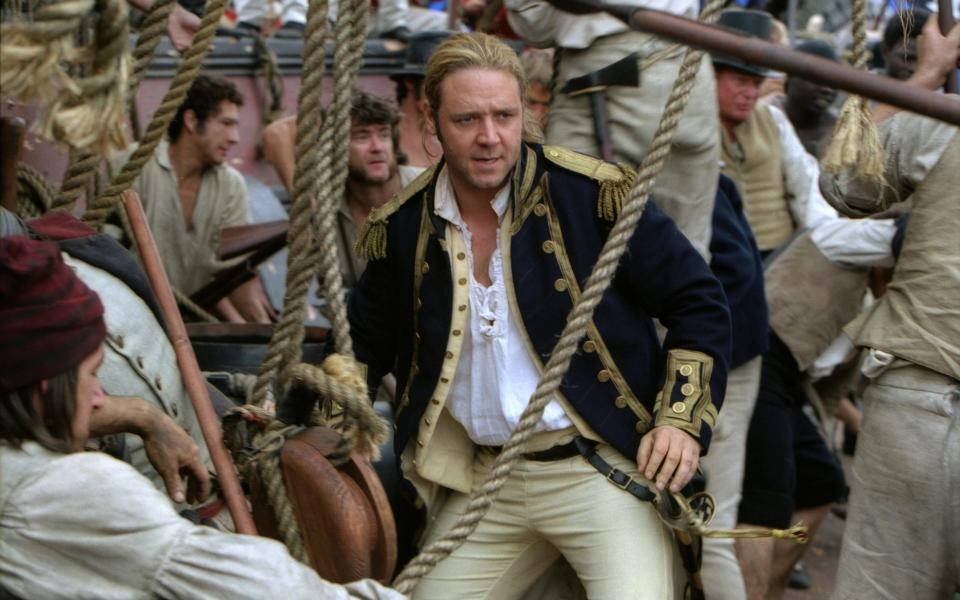War is the defining event for any generation that lives through it. Like all great art, cinema has tried to make sense of the worst human tragedies and suffering – and celebrated mankind’s greatest, most heroic triumphs. It’s little wonder that filmmakers return to the theatre of conflict so frequently.
The first war film is commonly cited as Tearing Down the Spanish Flag in 1898 – a single 40-second scene. Made during the Spanish-American War, it sees a Spanish flag lowered and replaced with the Stars and Stripes. Certainly, it’s an image at the heart of many American war films since – if not flapping quite blatantly on the screen.
Cinema has not only depicted war – in biographical films, fictional adventures, and recreations of real battles – but been an intrinsic part of war itself. Film has been a key propaganda tool – most notoriously, Triumph of the Will, the seminal Nazi film – and told stories about wars while they were still being fought. John Wayne’s jingoistic The Green Berets (1968), for example, tried to rally audiences behind the communist fight in Vietnam.
The films chosen below have been chosen for what they have to say about humanity in the face of conflict; for capturing how lives are transformed by war; for bringing viewers close to the extremes of heroism and tragedy; for portraying acts of unimaginable courage or brutality that are beyond the experience of most civilians, but are thrust upon people under gunfire. Others are just rollicking, soul-stirring action films.
35. Master and Commander: The Far Side of the World (2003)
This Napoleonic Wars adventure stars Russell Crowe stars as Captain Jack Aubrey – “Lucky Jack” – who strides around the deck of the HMS Surprise like a flaxen-haired alpha. Chasing down an elusive French privateer, Aubrey steers the choppy waters between duty and pride. Based on the Patrick O’Brian novels and directed by Peter Weir, the film wastes little time in giving an illuminating – not to mention stomach-turning – look at warfare on the high seas.
Cannonballs explode through the ship in bursts of smoke and wooden shards. But more alarming is Paul Bettany’s ship surgeon readying his tools for the incoming casualties – and he’s soon sawing off a cabin boy’s arm. It’s quite a soulful adventure, but the climatic ship battle is resplendent – every cannon blast is a hearty jolt of adrenaline. And there’s more at stake than defending the captain’s pride. “This ship,” says Aubrey, “is England”

34. The Dam Busters (1955)
A box office success, The Dam Busters combined cutting-edge special effects with archive footage of bomb trials and specially filmed flying scenes with actual Lancaster Bombers. The film recreates Operation Chastise, the 1943 hit on German dams with the bouncing bomb. It’s a detailed account of the bomb’s creation by Barnes Wallis (an eccentric Michael Redgrave) and the mission, which lasts almost 35 minutes.
The theme – The Dam Busters March – is likely to make men of a certain age stretch out their arms and zoom around the house. The film itself is the epitome of old-timey, posho English war pictures, replete with up-for-the-ruck pilots who say things like “Good show, sir!” and “Bang on, skipper!” Some of the language has aged horribly but it’s a story of its time. It ends somberly, showing the empty chairs and mess rooms of the pilots who never returned.
33. 49th Parallel (1941)
One of several sublime British war pictures from Michael Powell and Emeric Pressburger. It won an Oscar for best story but was, in fact, propaganda. The Ministry of Information tasked Powell and Pressburger with making a film that would encourage the Americans to join the war effort. In their story, a U-boat crew lands in Canada. The idea – as detailed in the Powell and Pressburger documentary, Made in England – was to put the Nazi threat at the US border.
It’s complex for a wartime film. One of the Nazi sailors, Vogel (Niall MacGinnis) is oafishly sympathetic. In one scene, he places rosary beads into the hands of a poor French-Canadian they’ve shot; seconds later he tears down a picture of King George and bayonets a swastika on the wall. Vogel gets a taste for freedom in rural Canada, so the fanatical U-boat captain has him shot.
32. The Battle of Britain (1969)
This classic ensemble is absolutely packed with British brilliance, including Laurence Olivier, Kenneth More, Trevor Howard, Michael Redgrave, Robert Shaw, Ian McShane, and Michael Caine, who bites the big one in this film. And British brilliance fuels The Battle of Britain (with help from Canadian, Czech, and Polish airmen) in depicting one of the nation’s proudest victories. Directed by Bond regular Guy Hamilton, the film recreates multiple air battles as faithfully as possible (even the planes are proper WWII models or dead ringers for the real thing).
The charm is in its tally-ho heroism – it’s the kind of war film that Sunday afternoon television was made for – but its air battles are stunning. Posh commanders stand around planning and observing, while pilots perform feats of derring-do or quite literally crash and burn. The film, perhaps appropriately, was a bomb at the time.
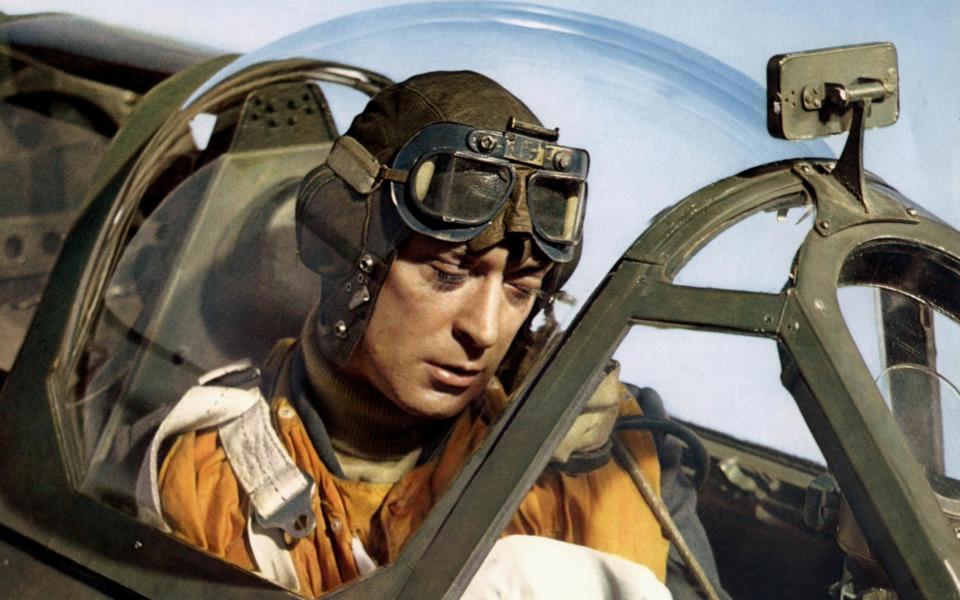
31. Glory (1989)
Matthew Broderick gets top billing as the real-life Colonel Robert Gould Shaw, but Glory is one of the few high-profile war films to tell the story of black soldiers, crediting the 200,000 black men who served in the American Civil War. Shaw leads the 54th Massachusetts Infantry Regiment, one of the Union Army’s first African-American regiments. A cast of heavyweight black actors fill the ranks – Morgan Freeman, Denzel Washington, and Andre Braugher – though their soldiers are fictional.
Glory, directed by Edward Zwick, won three Oscars – the Academy certainly loves a worthy war film – and takes some liberties in hammering home its message, which puts the Hollywood spin on historical racism. The depiction of the Second Battle of Fort Wagner – where Broderick and Washington’s characters perish side-by-side – is heart-swelling stuff.
30. Where Eagles Dare (1969)
Richard Burton and Clint Eastwood go on a mission behind enemy lines – to save an American general from a Nazi fortress in the Bavarian mountains. There’s something distinctly James Bond-like about this lavish, all-action adventure – fights on top of cable cars, sinister baddies in their lair, and buxom double-agent fraüleins who canoodle with Burton.
Directed by Brian G Hutton, it’s also surprisingly violent, as Eastwood sneaks out of the shadows to knife Nazis and shoot them in the back. There’s a tension from the start, as something’s decidedly off about the mission: you’re never sure who’s playing for which side – a tension that comes to pass in a masterful scene of deception, gall, and double-bluffery from Burton’s British Major John Smith.
29. The Hurt Locker (2008)
Kathryn Bigelow’s Oscar-winning film stars Jeremy Renner as a bomb disposal expert during the second Iraq War. The brilliance of Bigelow’s filmmaking is that it puts you right in the blast zone – you feel the stickiness of the sweat and heat beneath the protective bomb suit.
The shaky-handed disposal scenes have a palpable rising panic as clocks tick down and insurgents surround the team. In one upsetting sequence, Renner’s Staff Sergeant William James is forced to abandon an innocent man who’s been strapped with a suicide vest. When James returns home, he’s lost in civilian life. Indeed, the film is about hard-wired trauma, with characters permanently scarred by being caught in the emotional blast radius.

28. The Cruel Sea (1953)
More than 70 years since it first set sail, The Cruel Sea is still the finest film about the Battle of the Atlantic (from the Allies’ perspective, at least – Das Boot details the dank slog of submarine life from the German point of view). Based on the novel by Nicholas Monsarrat and produced by Ealing, it stars Jack Hawkins as Lieutenant Commander George Ericson. He commands the HMS Compass Rose, a corvette that escorts Allied convoys across the Atlantic.
The crew is ramshackle at first but becomes more disciplined as the years pass by. The crew battles the weather, the U-boats, and the life-or-death dilemmas of combat. Ericson at one point drops a depth charge, knowing it will kill Allied seamen in the water. The sonar beeps crank up the suspense as the crew watch on all sweaty-browed.
27. Black Hawk Down (2001)
Ridley Scott’s Oscar-winning film depicts the Battle of Mogadishu in 1993 – a disastrous moment for the US forces in the Somali Civil War. It was supposed to be a 30-minute operation to seize two warlord lieutenants but erupted into a day-long firefight. Hundreds were killed or wounded, and two Black Hawk helicopters were shot down by RPG rockets.
Scott’s retelling is very much a Hollywood war picture – gallant American heroism vs savage foreign menace – and papers over some of the context and background. With a cast of prominent faces from the early 2000s – Ewan McGregor, Josh Hartnett, Orlando Bloom, Ioan Gruffud, and Eric Bana – it’s also furious, bloody, and exquisitely shot. It ends with a triumphant race to safety, which stretches the truth slightly, but the film remains a nerve-blasting, broadly true ordeal.
26. Full Metal Jacket (1987)
Stanley Kubrick directs a Vietnam tale in two halves. The film begins with new recruits “Pyle” (Vincent D’Onofrio) and “Joker” (Matthew Modine) joining boot camp, where they soon find themselves in a “world of s—t”. The second half then follows Joker’s battle to survive in the Tet Offensive. Full Metal Jacket is brimming with testosterone: locker room nicknames, macho standoffs, sex-starved soldiers, gung-ho gunners, and brothers dying in each other’s arms.
But the weakest of them, Private Pyle, is broken before he gets anywhere near the battlefield. Lee Emery’s always-barking drill sergeant goads Pyle until he commits a murder-suicide. (“What is your major malfunction, numb nuts?!”) The boot camp half is the stronger part of the film, though there’s no shortage of action once Joker reaches ’Nam.
25. A Bridge Too Far (1977)
This all-star ensemble is from the Longest Day tradition of battle recreation, telling a blow-by-blow account of the ill-fated Operation Market Garden – including the Battle of Arnhem – in September 1944. As per the title, the objective of the operation was to seize a series of bridges in Nazi-occupied Netherlands.
The film does a commendable job of telling as much of the true story as possible, building the planning and its execution over a meaty three hours, with a cast that includes Dirk Bogarde, Michael Caine, Gene Hackman, Robert Redford, Sean Connery, and Anthony Hopkins. It puts a more optimistic spin of what was a flawed mission from the get-go. Directed by Richard Attenborough it’s packed with spiffing visuals: skies filled with paratroopers, exploding tanks, and immense bridge battles.
24. The Thin Red Line (1998)
Released just five months after Saving Private Ryan, The Thin Red Line felt like an alternative view of WWII. A fictionalised account of the Battle of Mount Austen in 1942 – which happened on the island of Guadalcanal in the Pacific Theatre – it marked Terrence Malick’s return to directing after 20 years. It’s an epic poem disguised as war cinema: lyrical, spiritual, and in awe of the natural world.
It has an impressive ensemble of actors – Jim Caviezel, Ben Chaplin, John Cusack, Sean Penn, Adrien Brody, Woody Harrelson, George Clooney, John Travolta – many of which are just cameos. There’s no true protagonist, but The Thin Red Line is haunted by the inner soul of its characters and asks big questions – “What is this war at the heart of nature?” – as it leads a charge against war movie convention.
23. The Deer Hunter (1978)
Michael Cimino’s Vietnam epic won five Academy Awards and ranks alongside any classic from the 1970s. Best friends Mike (Robert De Niro) and Nick (Christopher Walken) go to ‘Nam and forced to play Russian roulette for the amusement of Viet Cong captors.
The scene caused controversy for having no basis in historical fact, but it’s a trigger point for the film’s deep trauma – a metaphor for America in Vietnam and about as subtle as, well, a half-loaded gun to the head. De Niro’s Mike returns home but struggles to assimilate back into civilian life. Travelling back to Saigon, he plays Nick one last time at Russian roulette. The final shot of the game is genuinely, horribly disturbing. The only escape from their Vietnam experience, perhaps.
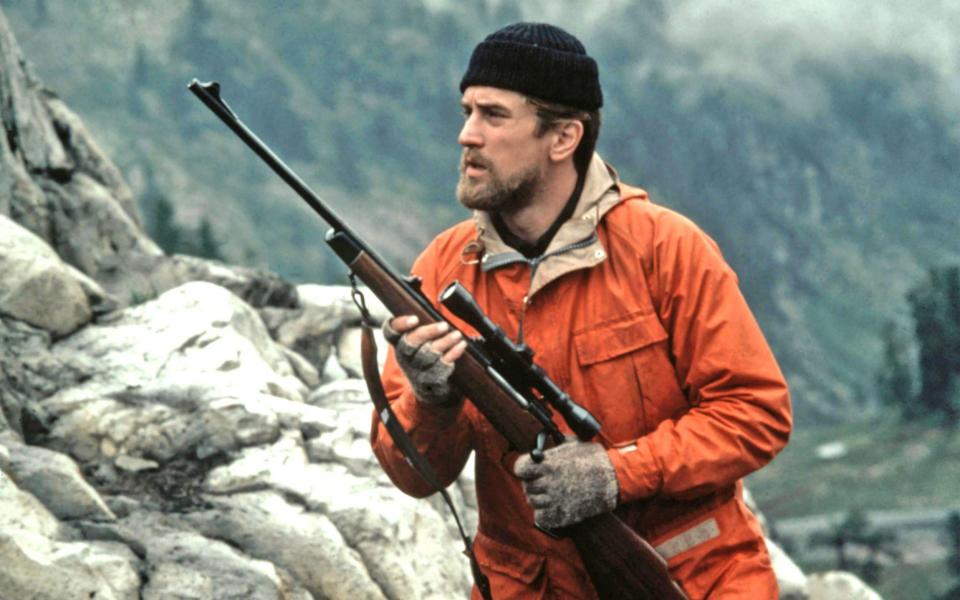
22. Gallipoli (1981)
Archy and Frank (Mark Lee and Mel Gibson, still in his Mad Max years) join the Australian army for the Gallipoli campaign in 1915. Directed by Peter Weir, it has a schoolboy spirit. Before the boys are shot to pieces, at least. Archy and Frank are competitive sprinters who gladly enlist. They go to the Gallipoli peninsula and take part in the Battle of the Nek – a diversionary charge into no man’s land – while British officers sit on the beach drinking cups of tea.
It’s a film that really digs into the horror of the trenches. Not with gore and filth, but the fear of seeing how swiftly – and senselessly – waves of Australian soldiers are cut down. It hinges on the final scene as Frank – a message runner – races to deliver orders to halt the push. But he’s not fast enough to save Archy.
21. Hope and Glory (1987)
No film captures blitz spirit quite like John Boorman’s autobiographical tale, a film that’s full of nostalgia, wide-eyed wonder, and a sense of just bally well getting on with it. Beginning on the day that Britain declared war on Germany, Hope and Glory is WWII as a childhood adventure.
For young Billy (Sebastian Rice-Edwards) – who essentially plays Boorman as a child – the bombed-out London suburbs are a playground, and bombing raids are just a big fireworks display. Kids cheer when their school is destroyed – like the start of a never-ending summer holiday – and they gossip excitedly when someone’s mum is killed. The other mums, keeping the British end up while the men are away, get back to dusting and re-hanging the curtains after the windows are blown out.
20. Enemy at the Gates (2001)
Directed by Jean-Jacques Annaud, this film does for Stalingrad what Saving Private Ryan did for the Normandy landings. It’s less about the up-close blood and guts and PTSD than it is pure carnage: piles of rubble interspersed with piles of bodies. Stalingrad, however, is merely a backdrop for the story of a sniper duel between real Russian sharpshooter Vasily Zaitsev (a plummy London-accented Jude Law) and German marksman Erwin König (Ed Harris), who may or may not have existed.
The story actually comes from a Soviet propaganda yarn. The opening battle sequences are grimly riveting – Jude Law’s gunman has to charge into the battle completely unarmed – but the best stuff is the battle of wits between the snipers. The snipers need just a second’s glimpse to shoot their shots, which zip out of nowhere.
19. Downfall (2004)
This account of the final days in the Führerbunker is now a popular meme. Hitler’s furious rant has been turned into a seemingly endless stream of parody videos (Boris Johnson’s time as PM and many football disasters have been given the Hitler parody treatment). The Oliver Hirschbiegel-directed Downfall was controversial at the time for humanising the Führer, though that’s really the film’s strength.
Told from the perspective of Traudl Junge, Hitler’s private secretary, it sees Hitler (Bruno Ganz) transform from furious to pensive but always pathetic. He’s a petulant child who blames everyone else for failure – the generals, the German people – while Berlin crumbles around him and his yes men plot suicide. Between the Battle of Berlin and the corridors of the bunker, Downfall is chilling. Particularly Hitler’s unceremonious, also-pathetic death – his body is just bundled into a ditch and burned.
18. The Eagle Has Landed (1976)
“The Fuhrer has instructed us to kidnap Winston Churchill.” So goes the plot of John Sturges’s final film, which sees German paratroopers, disguised as Polish soldiers, infiltrate a Norfolk village in pursuit of Churchill. The (fictional) plan is discovered when one of them is mangled in a waterwheel, revealing his German uniform beneath his disguise.
The cast is pure class: an eyepatch-wearing Robert Duvall; Donald Sutherland as a sociopathic Irish republican; Jenny Agutter as a Norfolk belle who melts mercenary hearts; Donald Pleasence as an oddly jolly Himmler; and Michael Caine as the German paratrooper who leads the mission. It’s an unusual war film, coming from the perspective of villainous Germans. Though Caine – striking in his German clobber – is a sort-of good egg who tries to save a Jewish woman from the SS.
17. Inglourious Basterds (2009)
Quentin Tarantino tackles the Second World War with a fantastical reworking of history. It’s as much about war films as the actual war, with homages that range from The Dirty Dozen to German propaganda (as Tarantino knows, the Nazis understand the power of cinema). Brad Pitt leads the eponymous basterds, who hunt and kill down Nazis in occupied Europe.
The film, however, belongs to his opposite number: Colonel Hans Landa “the Jew Hunter” – a star-making performance from Christoph Waltz – who’s as camp as he is shrewd. The film is also about the precariousness and nuance of language. Michael Fassbender’s tally-ho spy blows his cover by raising literally one wrong finger when ordering three scotches – an error that turns an unbearably tense drinking game into a shootout. The final act is a triumph as the Third Reich meets an (in)gloriously sticky end.
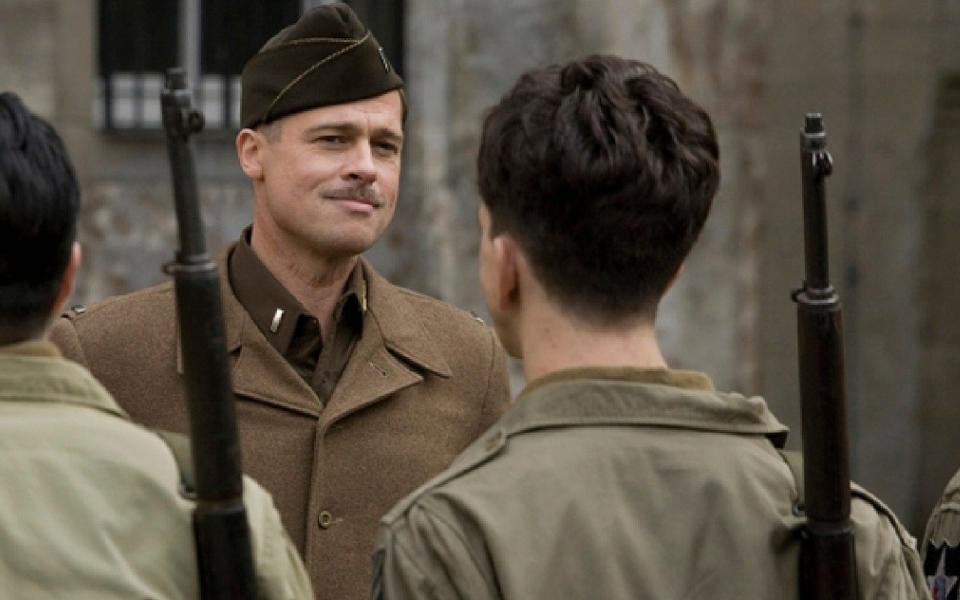
16. Dunkirk (2017)
Christopher Nolan gives the Dunkirk evacuation his form-bending treatment, telling the story from three vantage points – land, sea and air. The action also unfolds over three different timeframes. For the salt-of-the-earth tommies waiting to be evacuated, which include Harry Styles, the action plays out over a week. For the men leading the rescue via the sea, including Mark Rylance’s civilian sailor, it’s a day.
And for Tom Hardy’s spitfire pilot, who fights off the German bombers above the evacuees, it’s just an hour. In another filmmaker’s hands it could be gimmicky, but Nolan uses the device as a pulse-pounding countdown to one of the most significant events of WWII – via thrilling dogfights and torpedoed ships that clank and groan as they sink.
15. The Life and Death of Colonel Blimp (1943)
Though named after the comic strip character, this epic war romance is about the life of Major-General Clive Wynne-Candy (Roger Livesey), who, over a period of 40 years goes from a dashing young Boer War hero to a blustery old walrus-chops in the Home Guard. From Michael Powell and Emeric Pressburger, it was made as a sharp satire of the stuffiness of the British military.
By WWII, Wynne-Candy is befuddled by the insolence of younger soldiers (“Do you know how many wars I’ve been in?! I was fighting for my country when your father was still in bumfreezers!”) It was also daring at the time for depicting Wynne-Candy’s long-time friendship with a German soldier. Winston Churchill objected to the film and tried to prevent its release. Its flashback structure was scrapped until the film was rightly restored years later.
14. Tora! Tora! Tora! (1970)
This epic restaging of the attack on Pearl Harbor – which tells the story from both the American and Japanese perspectives – took years of preparation. It was, at the time, the second most expensive film ever made and had two directors, with Richard Fleischer directing the American scenes and the legendary Akira Kurosawa directing the Japanese scenes.
Until, that is, Kurosawa was fired for eccentric behaviour and replaced by Toshio Masuda and Kinji Fukasaku. It’s a slow-build epic, with lots of uniformed men talking in briefing rooms, but the flying sequences and attack are sensational, using planes dressed up as near-replicas of the real thing. Tora! Tora! Tora! – named after the codeword for a successful attack on Pearl Harbor – flies as close to historical fact as any war film ever made.
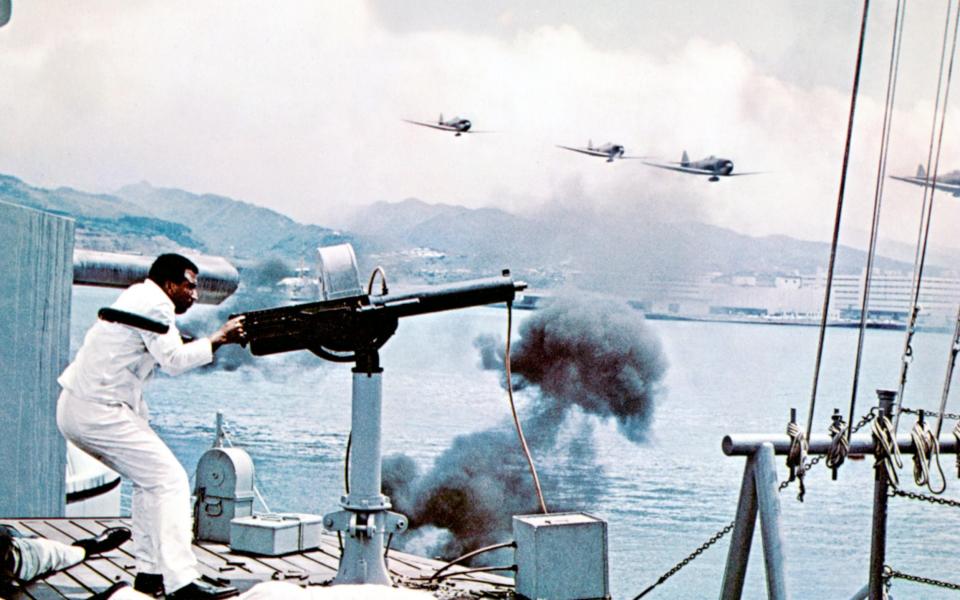
13. Apocalypse Now (1979)
Francis Ford Coppola’s Vietnam epic is a tale of madness, as Martin Sheen travels upriver to kill the stark raving bonkers Colonel Kurtz, who’s played by the stark raving bonkers Marlon Brando. It’s an undisputed masterpiece of the New Hollywood era but also electrified by its behind-the-scenes battles: Sheen driven to a meltdown and heart attack; Coppola having to shoot around Brando’s weight gain; and a production that overran by months (not to mention millions of dollars).
The film itself is best remembered for its helicopter sequence – a thumping napalm strike to the sound of Ride of the Valkyries – and its highly quotable lines (“I love the smell of napalm in the morning”). It’s the war film as a psychological breakdown, best summed up by Kurtz’s dying words: “The horror, the horror”.
12. Schindler’s List (1993)
Arguably, Steven Spielberg’s Holocaust opus isn’t strictly a war film – more a historical or biographical drama. But if a great war film shows humanity in the face of conflict – heroic or tragic – Schindler’s List has to rank among the greatest war films. It begins as a more of an administrative runaround, as Oskar Schindler (Liam Neeson) – a badge-wearing Nazi – helps Jews escape the concentration camps by bringing them to work in his factory.
At first, however, for profit. The true horror manifests as camp commandant, Amon Goeth (Ralph Fiennes), who shoots Jewish prisoners out of boredom. What’s most frightening is how unremarkable their deaths are – their lives are extinguished instantly as their bodies just slump or twitch. It’s not a film about combat – it’s a battle for the soul of humanity.
11. The Dirty Dozen (1967)
The Second World War goes macho as soldiers are plucked from military prison and put under the command of Lee Marvin’s do-or-die major. The Dirty Dozen – which also includes Charles Bronson, Donald Sutherland, and Telly Savalas – are sent on a mission to attack a French chateau filled with Nazi officers, an effort to soften up German command ahead of D-Day.
Though it marches through comedy romp territory, it’s morally murky stuff: the mission turns into an atrocity and there are some particularly nasty characters among the Dozen. It’s a film that fires back against toothless Hollywood pictures, daring to drive an armoured jeep right into the filth and unpleasantness of war. The film’s macho streak is enhanced by Lee Marvin’s hard-drinking antics during the London production.
10. The Bridge on the River Kwai (1957)
David Lean’s multi-Oscar winning classic is irrefutable proof that, sometimes, you can blow historical fact to smithereens. Based on the novel by Pierre Boulle, it tells the story of British POWs – led by Alec Guinness’s bloody-minded officer, Colonel Nicholson – who are forced by Japanese captors to work on the Burma Railway (aka the Death Railway, named for the number of people who died building it).
Nicholson insists on doing things the British way – he wants to prove that British engineering is top-notch – while refusing to do any hard graft himself because he’s an officer and just wouldn’t be proper. Even being locked in an iron box won’t budge him. The bridge is real – actually, it was two bridges – though the film bridge is blown up by commandos, which never happened. It’s a bit of movie fantasy but no less spectacular.

9. All Quiet on the Western Front (1930)
Made between the world wars, the political context of Lewis Milestone’s landmark film gives it immense power. Based on the novel by Erich Maria Remarque, it follows a group of young Germans who enlist for the Imperial Army – schoolboys giddy with “war enthusiasm” – but then die one-by-one. The film’s anti-war message is so potent that top-ranking Nazi Joseph Goebbels sent his brownshirts to disrupt screenings.
The 2022 Netflix remake is graphic and grim – industrial scale violence – but the original has lost nothing in almost 100 years. See tragic hero Paul Bäumer (Lew Ayres) carrying a friend to safety, only to realise he’s already dead, or when he bayonets a French soldier in no man’s land and is forced to watch him die. “Forgive me, comrade,” he says. “If we threw away these rifles and these uniforms, you could be my brother.”
8. 1917 (2019)
Sam Mendes’s one-shot WW1 adventure is from the Saving Private Ryan school of visceral realism, but with the technical vision of Kubrick’s Paths of Glory. It’s as relentless as it is deeply affecting. George MacKay is young-but-damaged Lance Corporal Schofield – already a veteran of the Somme by the time the action begins. Along with his pal Blake (Dean-Charles Chapman), Schofield is ordered to leave the trenches on the Western Front, scuttle across no man’s land, and warn troops of an impending attack.
There’s a parade of cameo role officers along the way – Benedict Cumberbatch, Mark Strong, Colin Firth – but it’s the story of an honest-to-goodness tommy. The action is thunderous and suffocating – almost quite literally – while baby-faced soldiers bleed out and block the river as bobbing, bloated bodies.
7. Platoon (1986)
Written and directed by Oliver Stone, the semi-autobiographical Platoon was hailed upon its release as the greatest, most realistic ‘Nam film ever made. It nabbed four Academy Awards and boasts one of war cinema’s most iconic images: Willem Dafoe’s Sgt Elias being shot to pieces by the NVA, his arms stretched heavenwards.
Charlie Sheen takes the Oliver Stone role, playing a rich kid who enlists and is soon warped by ‘Nam. The troops – well, some of them – become animals, with a hunger for rape and violence. The worst of Vietnam is personified by the unhinged Sgt Barnes (Tom Berenger), who’s spoiling to commit an atrocity. Almost 40 years on it feels like ‘Nam done ‘80s action-style, with its stirring strings, fast-quipping troops, and adrenaline-firing gunfights.

6. Das Boot (1981)
Wolfgang Petersen’s U-boat film is cold, cramped, and slow. It’s all by design, as Petersen documents life aboard German submarines in WWII – the tedium and mental strain – punctuated by moments of terror or excitement: rivet-bursting depth charges, or an Allied convoy in the distance. Which at least gives the crew something to do and pass the time: hunt down the Allies and attack.
The film is based on the novel by Lothar-Günther Buchheim – a fictionalised account of the time he spent on the real U-96 as a war correspondent. Petersen went to great lengths to get the technical specifications of the submarine right. There’s bloody action – strafing attacks that come swooping from the air – but the dynamics on the submarine are just as interesting. These are not Nazis (save or two true believers) but disgruntled sailors.
5. The Longest Day (1962)
Based on the book by Cornelius Ryan, a Daily Telegraph war correspondent who watched the Normandy landings unfold from the air, The Longest Day was an attempt to tell the story of D-Day as it happened. Scene for scene, it remains cinema’s most accurate depiction, coming from the perspectives of the British, the Americans, the French, and the Germans – and shot by British, American, and German directors.
Masterminded by producer Darryl F Zanuck, it was a hugely ambitious production with a sprawling ensemble cast that includes John Wayne, Robert Mitchum, Richard Burton, Kenneth More, Henry Fonda, and Sean Connery. The film takes a few creative liberties with the real events but not many – the taking of Pegasus Bridge is especially faithful – while leaning into some D-Day myths for its best scenes, such as the moment the first German spots the Allied invasion coming.
4. Paths of Glory (1957)
Directed by Stanley Kubrick, Paths of Glory is a commanding, sumptuously shot morality tale – the story of three French soldiers who are sentenced to be shot for cowardice. The film is so vehemently anti-war that Hollywood studios were reluctant to make it. But Kubrick soldiered on with the project and secured major star muscle from Kirk Douglas, who plays Colonel Dax. Like so many great war films it’s a technical triumph. See how Kubrick captures Douglas’s magnificent march through the trenches and into the muck and chaos of no man’s land. Douglas, however, is most powerful off the battlefield. He defends the soon-to-be-executed men and takes the general to task for self-serving politics and treating men like industrial waste. “I pity you,” he tells the general, who has no clue what he’s done wrong.

3. The Great Escape (1963)
Few themes – from any film, no matter what the genre – can stir the emotions like the much-whistled tune from The Great Escape. Its sense of heroic bluster is embedded deep in the cultural psyche. The film, directed by John Sturges, is known as the textbook example of the Hollywoodification of war stories.
It puts an American – Steve McQueen’s motorbike-jumping “Cooler King” – at the centre of the plot to dig out of Stalag Luft III and ignores the fact that the real escape, a mass breakout of POW airmen, was a reckless folly. It barely matters in the face of such undoubted brilliance. The ensemble cast is a joy – including Richard Attenborough’s stubborn leader, Donald Pleasence’s near-blind forger, and Charles Bronson’s claustrophobic tunnel digger – while it drops iconic moments like pocketfuls of dirt down the trouser leg.
2. Zulu (1964)
Michael Caine and Stanley Baker command a small British garrison (around 150 men in real life) in defending a mission against an army of Zulu warriors. Thousands of them. Retelling the Battle of Rorke’s Drift in 1879, which saw eleven Victoria Crosses awarded, the Cy Endfield-directed Zulu is surprisingly true to the real events. Sixty years on, the film is pleasingly old-fashioned – all red paint-tipped bayonets and spears under the arm – though the optics of white colonist heroes slaying hordes of black villains raise a few modern-day eyebrows.
But it’s majestic filmmaking. There’s a power in the silence before the Zulus swarm the mission, and the finest moment comes when the Zulus break into a war chant, to which the Brits belt out a rousing rendition of Men of Harlech. It’s simply the best of British – imperialist mettle and stiff upper lips.
1. Saving Private Ryan (1998)
Steven Spielberg’s D-Day film was a staggering, never-before-seen achievement – a film that brought D-Day veterans to tears with its opening assault on Omaha Beach. Indeed, Saving Private Ryan changed how war is depicted on screen, making realism – if not necessarily historical fact – the primary order of all future war epics. From the second the soldiers are seen vomiting on the landing crafts, then exterminated at frightening speed, Saving Private Ryan takes aim at the deeper appeal of war cinema: it puts you as close to the reality of combat as possible.
The Omaha Beach scenes are gruelling and gutsy – not just for the blood and blown-off body parts, but for the sheer racket and disorientation. Captain Miller (Tom Hanks) then leads his men into Normandy to find and bring home Private Ryan (Matt Damon), whose three brothers have been killed in action – a mission of questionable value but awash with American sentimentality.
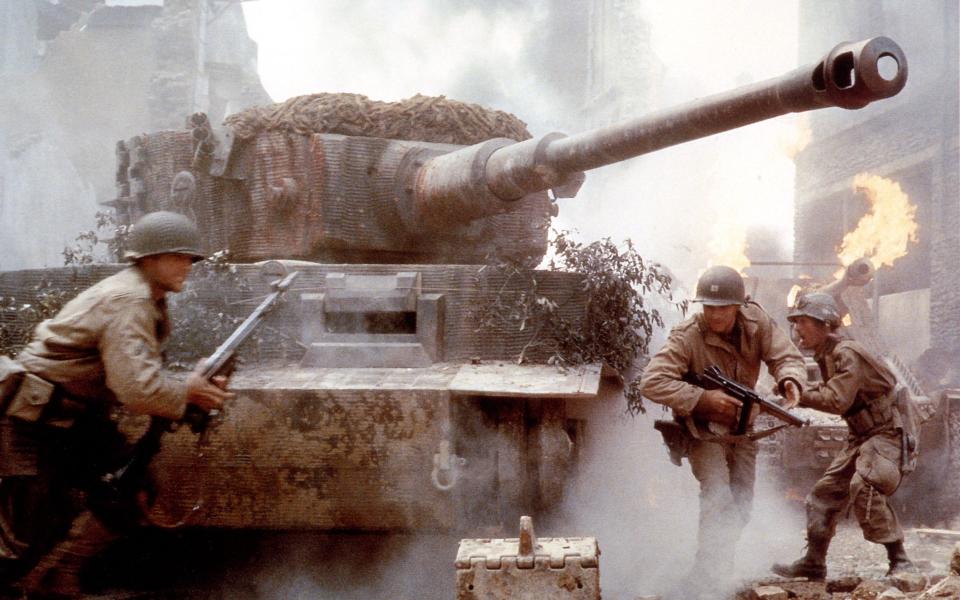
EMEA Tribune is not involved in this news article, it is taken from our partners and or from the News Agencies. Copyright and Credit go to the News Agencies, email news@emeatribune.com Follow our WhatsApp verified Channel

